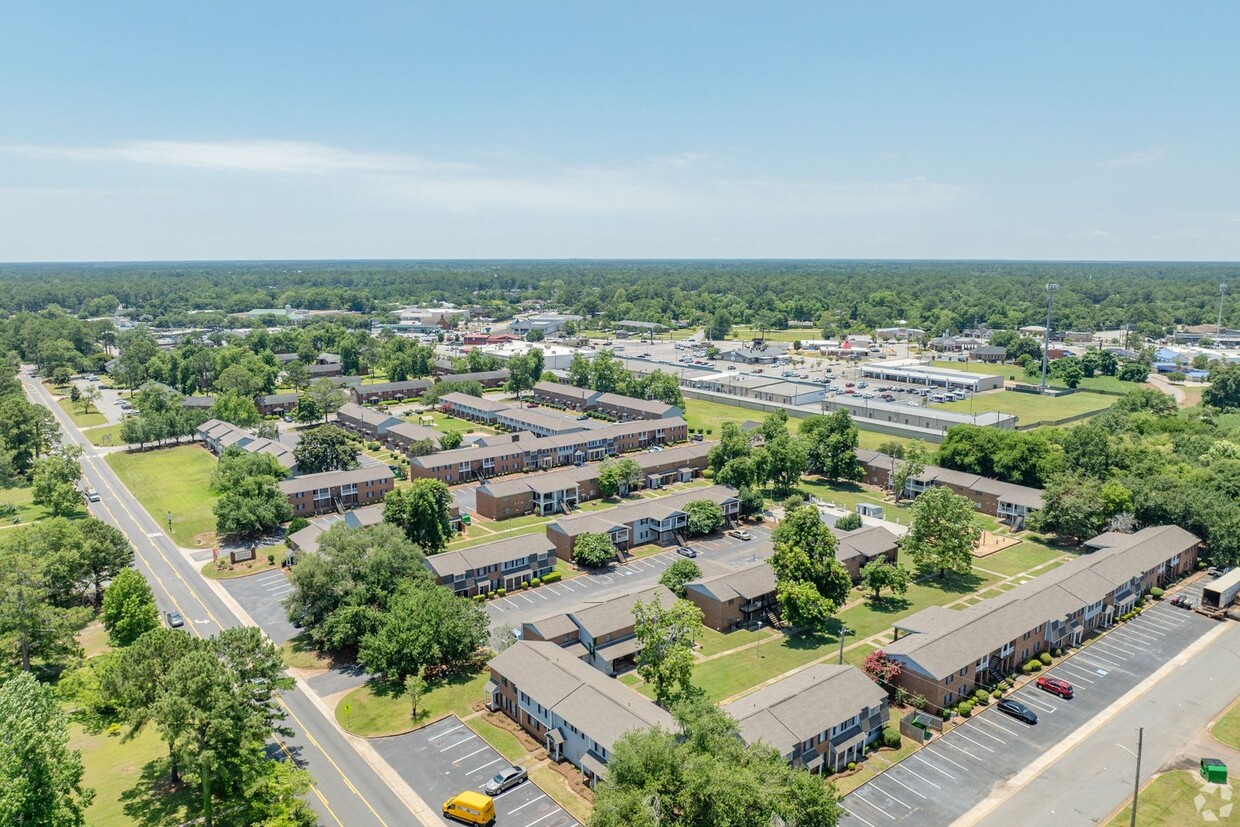2024-2028 Housing Market Predictions: A Gradual Thaw With Added Challenges
2024-2028 Housing Market Predictions: A Gradual Thaw With Added Challenges
As mortgage rates slowly fall, more buyers and sellers will enter the market, but housing prices should stabilize.
Over the next five years, although some trends accelerated by the COVID-19 pandemic will continue to influence real estate and land use, other factors will also gain in importance. Among those are an aging population, the rising costs of climate change, a more unstable world and the expansion of artificial intelligence into new corners of the economy. As a consequence, even if the housing market gradually unfreezes as mortgage rates slowly decline from 2023’s highs, the hottest housing markets in 2028 may look a bit different from early 2024.
This is based on data sourced from several authoritative sources, including the U.S. News Housing Market Index, an interactive platform providing a data-driven overview of the housing market nationwide.
Key Findings:
- After falling to a 28-year low in 2023, existing home sales will gradually rebound as mortgage rates decline.
- With home prices holding onto their gains due to lack of supply, true price discovery will occur as lending rates fall and more homes are listed for sale.
- Sales of newly built homes will hold their elevated market share due to builders’ ability to buy down mortgage rates plus pent-up housing demand.
- Rents will stabilize due to added supply and more closely track inflation rates
Sales Will Remain Low as the Housing Market Slowly Thaws
A year ago, the main challenge in predicting what the next five years would bring for the housing market was a high level of uncertainty. Most economists were predicting a recession because the chances of engineering a “soft landing” to avoid inflation while also avoiding rising unemployment was deemed low. As it turns out, most economists were wrong about the reasons for the inflation, and the U.S. economy has proven to be more resilient than expected. The main questions now are how long it will take to bring inflation back to 2.0% as well as for mortgage rates to fall enough to spur more home sales.
According to the Fed’s most recent economic projections from December, economists don’t see inflation subsiding to 2.0% on a consistent basis until 2026, which could mean higher but declining short-term interest rates for the next two years. However, inflation could still be falling steadily between now and then, meaning lower mortgage rates probably will drop more or less in tandem. But with nearly 90% of homeowners with mortgage rates under 6%, they’ll have to fall well below that level to prompt sellers who can afford to wait.
True Home Price Discovery Will Be Delayed
As with any other financial asset, the sale price of a home cannot be determined until buyers and sellers agree on a price based on market conditions and the availability of financing. This process is known as price discovery.
But when a healthy marketplace such as housing locks up due to lack of supply or affordable financing, that discovery is frozen in place until more transactions can occur. Although a few sales can happen, their prices might be skewed due to unique factors such as desperate sellers in financial trouble or stressed-out buyers putting in offers without personally inspecting the properties. True price discovery requires rational buyers and sellers as well as plentiful competition.
In the case of the housing market, a key reason that home values have held up better than expected has been the “lock-in effect” of homeowners sitting on the lowest mortgage rates in a generation. While a certain share of owners have no choice but to sell their homes due to divorce, death, debt, growing families, job changes and other reasons, most are waiting for mortgage rates to drop before even considering their next move.
The somewhat artificially low level of inventory for sale over the last two years has helped prop up home values even in the face of higher mortgage rates. As of October, the national S&P CoreLogic Case-Shiller Index – the leading measure of U.S. home prices – reached all-time highs after rising 4.8% year-over-year.
If and when the traditional fixed-rate, 30-year mortgage rate falls below 6% and especially 5%, more inventory released into the marketplace will mean more competition among sellers, ushering in improving price discovery. As inventory returns to healthier levels (such as a supply of 6.0 months versus today’s 3.2 months based on sales rates), look for home values to adjust accordingly based on the usual inputs of location, size, age and curb appeal.
Population Changes Return to Pre-Pandemic Trends
According to new Vintage 2023 population estimates released by the U.S. Census Bureau, with the COVID-19 pandemic heading into the rearview mirror, regional changes in population are returning to the trends noted prior to 2020. These changes include fewer deaths and the South dominating this growth.
Throughout the year, the nation gained more than 1.6 million people, and more states experienced population growth in 2023 than they did since the start of 2000. While the South did account for almost 90% of the annual increase (located mostly in Texas and Florida), the West made up most of the balance, with slight increases in the Midwest and a small decline in the Northeast.
Foreign Affairs Could Impact Large Purchases
At the recent World Economic Forum in Davos, Switzerland, four primary concerns competed for center stage at the 54th annual gathering of government and business leaders: the rise of AI, the potential impacts from climate change, crucial elections across the globe and an increasingly unstable world characterized by hotspots in Eastern Europe, the Middle East and Asia. Some believe that geopolitics hasn’t been this big of an economic threat since the Cold War.
These concerns are relevant because with today’s 24/7 news cycle and current consumer sentiment highly sensitive to inflation rates and personal incomes, reading or hearing about jobs impacted by AI, communities hurt by climate change or parts of the world descending into chaos could prevent some buyers from making that leap to purchase what could be the most important investment of their lives.
Hybrid Work Schedules Are Likely Here to Stay
Despite some of the best efforts from many of the country’s CEOs to get their workers back into company offices four to five days per week, it seems that hybrid work schedules including two to three days per week of remote work are h ere to stay.
Kastle System’s “Employee Back to Work Barometer” for the country’s 10 largest cities in the first half of January showed just under half of these spaces being occupied based on the digital tracking of employees entering offices and businesses. While clearly an improvement from the 15% rate estimated in mid-March 2020, it’s still about half of prepandemic levels.
According to professor Stijn Van Nieuwerburgh of Columbia Business School, not only has the value of office buildings plummeted by as much as 40%, but there’s the added risk of contagion to multiple banks that typically offer financing to commercial property owners. For housing developers and homebuyers, while some offices sold at fire-sale prices could be converted into housing, not only is it difficult to do but nearly impossible to offer at affordable prices without significant government incentives.
For those urban areas unable to adapt to a hybrid work world with less need for office space, a decline in property tax revenues could mean dramatic cuts to city services and a decline in the quality of life. When people start to flee deteriorating cities, that can result in a self-perpetuating “doom loop” similar to the hollowing out of Rust Belt cities as manufacturing jobs in the U.S. increasingly were sent overseas. Van Nieuwerburgh says that the 10 largest cities in the U.S. have lost about 2 million residents in the last three years. Whether they return is up to the creativity and adaptability of those cities.
Higher Costs for Owning Cars Could Impact Suburbs
It’s one thing to buy a home in the suburbs, counting on the costs of owning or leasing a car remaining fairly stable. Since 2020, however, besides new car prices rising by 30% to nearly $48,000, used car prices have jumped by 38% to $27,000. In the last year alone, auto insurance has risen by 20% due to more damage from weather events, more technologically advanced cars (especially electric vehicles) and inflation.
Add to those factors a potentially volatile oil market due to continuing unrest in the Middle East, and the total cost of owning a car is likely to rival many homeowner’s mortgages. If some car owners ignore the advice to spend no more than 10% of their income on car-related expenses, that could mean less money available for their housing options. However, it could also mean a return to urban areas with robust public transit systems and ride sharing options in which car ownership is no longer necessary.
The Costs of Climate Change Impacts Will Rise
For the last few months, it’s been almost impossible to avoid reading or hearing another story about the continuing impacts of climate change. That’s due not only to annual reviews of climate-related changes and costs by scientists, governments and the United Nations, but also monthly news updates of just how hot 2023 was versus pre-industrial times.
For the last few months, it’s been almost impossible to avoid reading or hearing another story about the continuing impacts of climate change. That’s due not only to annual reviews of climate-related changes and costs by scientists, governments and the United Nations, but also monthly news updates of just how hot 2023 was versus pre-industrial times.
Bottom Line : Do You Need Real Estate Asset Management or Property Management
The year included not just the hottest single day on record (July 6) and the hottest ever month (July), but also the hottest August through November and probably the hottest December. It included a day, Nov. 17, when global temperatures, for the first time ever, reached 2.0 degrees Celsius above pre-industrial levels. While part of this jump was due to a strong El Nino in effect, temperatures are still predicted to continue rising unless fossil fuel emissions are severely curtailed.
If the world is unable to keep rising temperatures well below the 2.0 degree Celsius upper limit agreed to at the 2015 Paris Agreement (and preferably below 1.5 degrees), adaptation will become crucial. Whether in the form of rising seas, stronger storms, larger wildfires, stubborn droughts and pests including termites migrating northward, homeowners and other real estate investors will have to plan for higher insurance and building costs.
AI Will Force People to Adapt Faster Than They Predict
Sam Altman, CEO of OpenAI and a star attraction at the recent World Economic Forum, warns that while societies will ultimately adjust to the gradual improvements AI will provide in their lives, the speed of these adaptations may take them by surprise.
According to an analysis by the International Monetary Fund, 40% of global jobs will likely be exposed to AI. Whereas automation and improving information technology have mostly impacted more routine tasks, AI expands this footprint into more high-skilled jobs. For residential real estate, AI is already being tapped to help match buyers with the most appropriate mortgage products and homes. Still, agents are better able to predict which homes are likely to be come up for sale, in order to offer their services, and suggest a more accurate sales price.
As AI continues to improve, more advanced economies like the U.S. face even greater risks and opportunities, which could impact 60% of jobs. Of this share, about half will leverage AI to enhance productivity, but for the other half AI will gradually take away some of their tasks – and in some cases their jobs.
As with climate change, the ways in which cities, states and regions adapt to the roll-out of AI will determine how resilient they are in the face of constant change. Given that Altman has said AI will certainly anoint both winners and losers, real estate investors would be wise to consider its role in their relevant labor markets in the years ahead.
Other Trends to Watch
With so many real estate and land use trends to watch throughout the 2020s, here are some other issues coming into the spotlight in the months ahead:
Total Cost of Ownership Will Become a Key Metric
Besides purchase prices and mortgage rates, other costs including property taxes, HOA fees, maintenance costs, adapting to a changing climate and especially higher insurance premiums will become a more popular barometer of total costs than just principal and interest payments alone. Intergenerational households, grown children “boomeranging” home and families created from friendships will increasingly pool multiple income sources to purchase homes and avoid the uncertainty of housing costs as renters.
There Will be Changes in the Ways Homes are Built
AI is likely to usher in a multitude of new homebuilding production methods that have struggled to gain traction. Whether it’ll be through the use of 3D printing, using more factory-built structural components or leveraging software to minimize the waste of materials, look for AI to help boost building quality while also speeding up construction timelines.
With the estimated pent-up demand for housing ranging from 1.5 million to 3.9 million homes, even if the nation’s builders are willing to produce the supply, it still takes time to find suitable land, skilled labor and materials. While the National Association of Home Builders expects this pent-up demand to be supplied between 2025 and 2030, unless there’s a consistently higher rate of legal immigration above the pandemic years, changing demographics by 2030 will result in lower demand for new housing.
Bottom Line : Do You Need Real Estate Asset Management or Property Management
Rely on those that know the business, We live it and breath it – at SIMM Capital our investment strategy is to seek the best assets that hold the largest opportunities to improve on management and value, delivering in rent growth year over year that will result in cash out refinance events and high quality returns. We know the business. To see how we can help you click the link – www.simminc.com




Recent comments